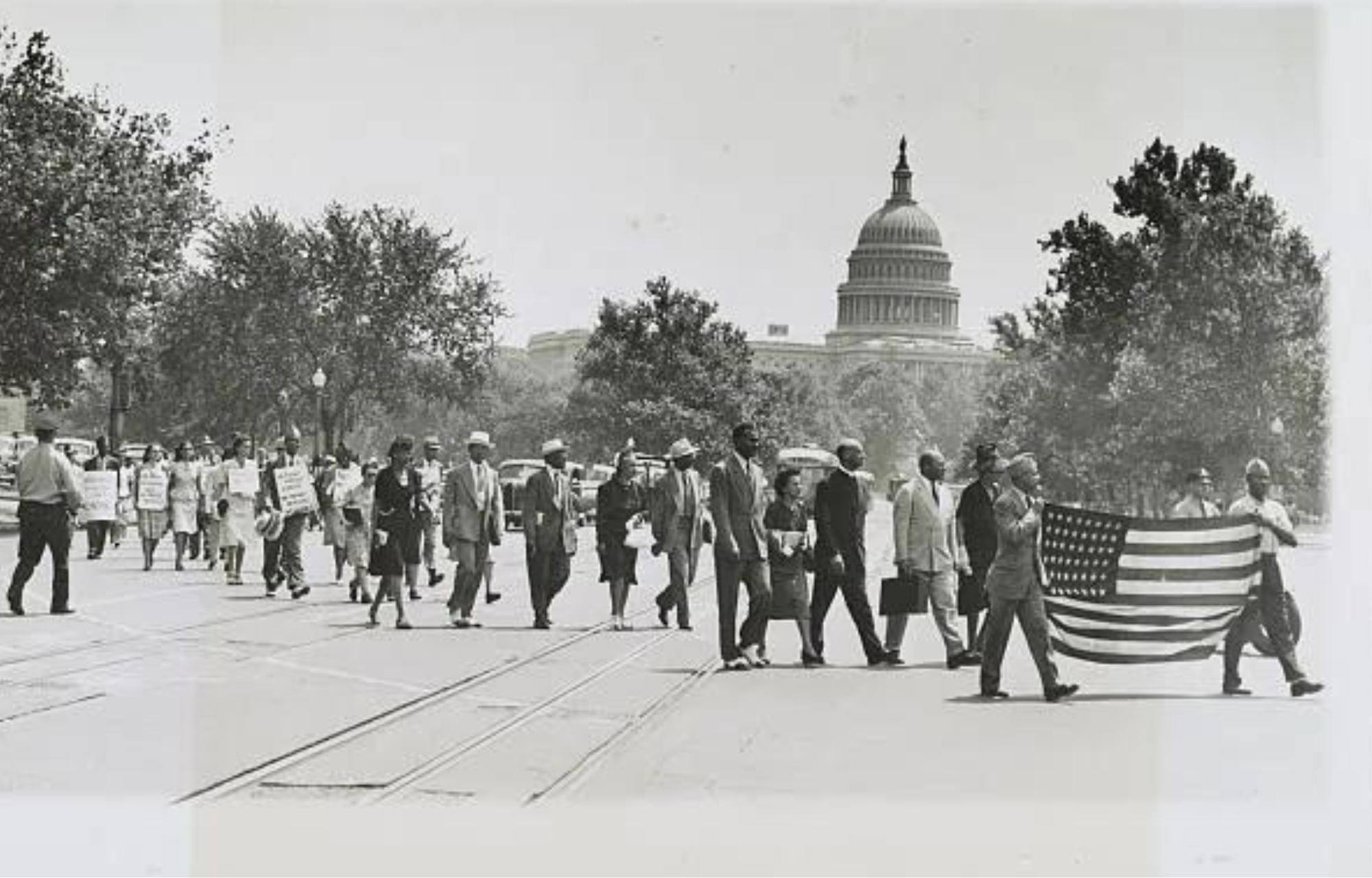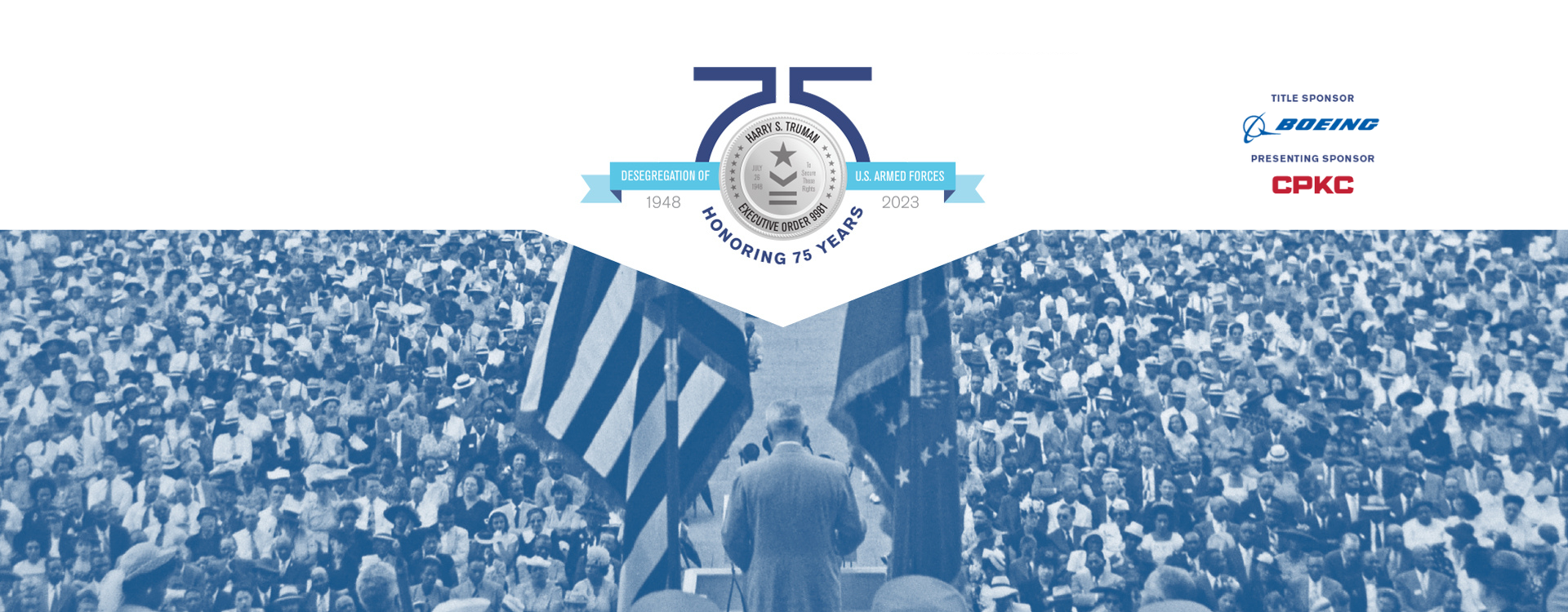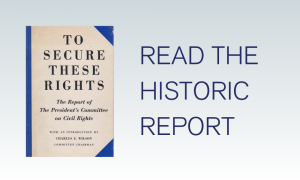TO SECURE THESE RIGHTS
By Steven F. Lawson, Professor Emeritus, Rutgers University
PART IV: PRESSURE FOR REFORM
African Americans refused to remain silent in the wake of this brutality The NAACP and its allies mobilized to obtain federal action to protect blacks from mob violence. Along with the SCHW and the CIO, the NAACP came to the legal defense of the black Columbians facing murder charges and succeeded in winning unprecedented acquittals before an all-white jury for twenty-three of twenty-five defendants. Activists did not concentrate on litigation alone. They took their concerns directly to Washington and engaged in a series of public protests. On July 29, 1946, the National Negro Congress, a group sympathetic to the Communist party, led a march of more than 1,000 people in front of the White House, after which a presidential assistant met with its leaders.

A group of African Americans marched near the Capitol in Washington to protest the 1946 lynching of four African Americans in Georgia. Courtesy Library of Congress
The following day, a delegation of fifty NAACP women continued the picketing by carrying signs reading “Speak! Speak! Mr. President” and “Where is Democracy?” In response to the Monroe murders, some 400 members of the National Association of Colored Women paraded at the White House and called for an end to lynching. In August, mass meetings were held in New York City and Washington, D.C., attracting 15,000 people each. NAACP executive secretary Walter White summed up the sentiment of the protesters: “A dread epidemic is sweeping the country, and especially the Deep South. . . . This disease rampant in our land is a rabies of the spirit, a mob sickness.” To find a cure for this illness, on August 6, the NAACP and some forty civil rights, labor, religious, and veterans’ groups created the National Emergency Committee Against Mob Violence (NECAMV).18
Black advocates had good reason to believe their complaints would receive a sympathetic hearing from the federal government. First, wretched scenes of Allied soldiers liberating Nazi concentration camps put the spotlight on the wartime victims of racial chauvinism. The 1944 publication of An American Dilemma, by the Swedish economist Gunnar Myrdal and a distinguished team of researchers sponsored by the Carnegie Foundation, revealed the horrors of the nation’s own malignant racism, which deeply scarred its black citizens. As the wartime alliance between the United States and the Soviet Union dissolved into a bitter cold war rivalry for global supporters, the treatment of African Americans became a matter fraught with international implications. Racist incidents would hamper American diplomats in their battle to win the allegiance of people of color throughout the world, whose power was beginning to emerge through decolonization and national liberation struggles.19
Second, blacks were gaining political muscle to back up their ideological arguments against continued inequality. The acquisition of the right to vote proceeded steadily but slowly in parts of the South following the eradication of the white primary. In the North, where blacks could freely exercise the ballot, the electoral power of their communities had increased through wartime migration from the South. Hundreds of thousands of blacks who left their homes in the South congregated in the major cities in the North and West that offered them the possibility of jobs. The black population swelled in states rich in electoral votes—New York, New Jersey, Ohio, Pennsylvania, Michigan, Illinois, and California—which heavily influenced the outcome of presidential contests. For Democrats, maintaining black allegiance to Roosevelt’s New Deal Coalition proved particularly critical.
PREVIOUS: Part III – Postwar Violence
NEXT: Part V – Harry S. Truman
Navigate through this essay by section: 1 2 3 4 5 6 7 8 9 10 11 12 13 14 Notes



